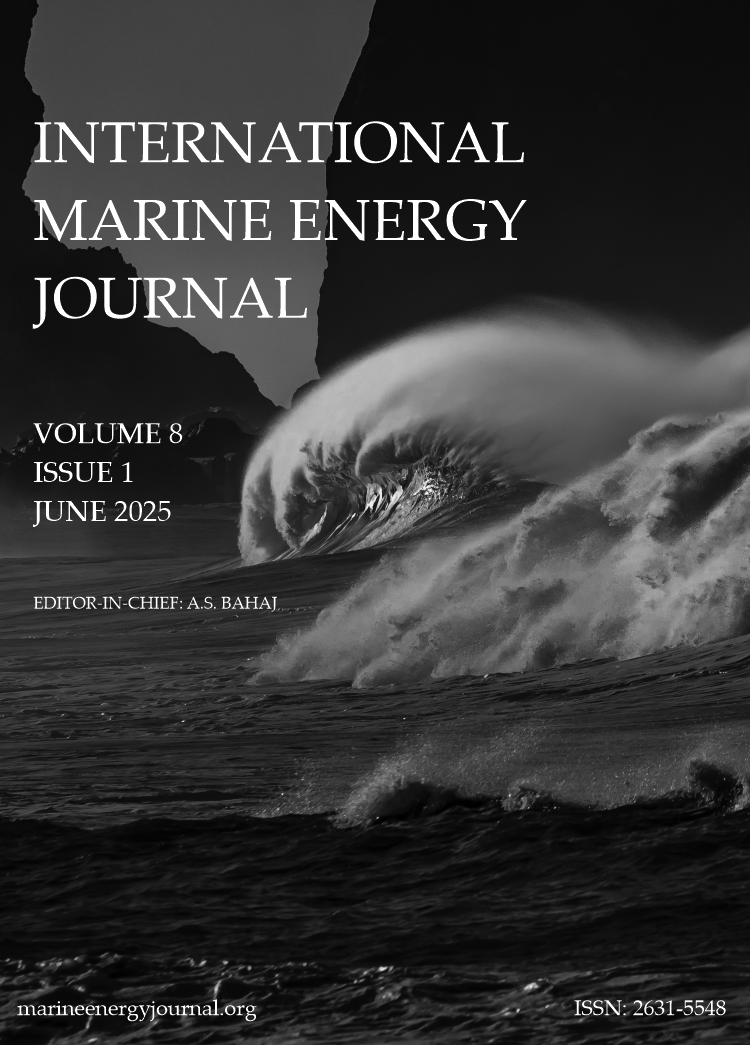Characterisation of turbulent flow and the wake of a tidal stream turbine in proximity to ridges of differing length
DOI:
https://doi.org/10.36688/imej.8.91-99Keywords:
Tidal stream turbine, Bathymetry, Large-eddy simulations, Wake recoveryAbstract
Fast tidal currents are generally found in shallow water depths where tidal turbines can be deployed to operate. In complex environments in which there is an irregular bathymetry, seabed shape changes can induce pressure gradients that accelerate or decelerate the flow depending on the slope and relative depth, affecting turbine wake recovery. In this study, a laboratory scale turbine, represented numerically using an Actuator Line Method (ALM), is computed using Large-Eddy Simulation (LES) over a flat-bed and in presence of three ridges with differing streamwise lengths. Turbines are positioned at several locations, namely at ridge-centre (0D) and at 2D upstream and downstream from the foot of the ridge to establish the influence of location on wake recovery rate. Turbine operating point is selected to yield a constant tip-speed ratio based on the disc-averaged velocity at each location obtained from a precursor simulation run without turbines. Results show that, relative to the same turbine in a flat channel, there is a noticeable enhancement of the rate of wake recovery when a turbine is sited upstream of the ridge whereas fatigue loads are higher when sited downstream of the ridge. Implications for array design regarding performance losses due to turbine- and bathymetry-induced wakes are drawn.
Downloads
Published
How to Cite
Issue
Section
License
Copyright (c) 2025 Sulaiman Hurubi, Tim Stallard, P.K. Stansby, Hannah Mullings, Pablo Ouro

This work is licensed under a Creative Commons Attribution 4.0 International License.
I the author/we the authors understand that I/we retain copyright over our article. I/we grant a licence to IMEJ to: publish my/our article under the terms of the Creative Commons Attribution (CC BY) License which permits use, distribution and reproduction in any medium, provided the original work is properly cited, and identify IMEJ as the original publisher.


